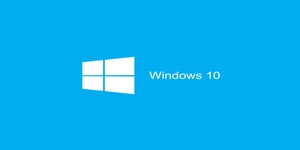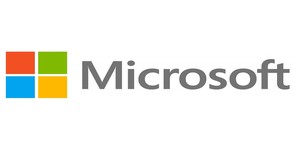Microsoft releases new Windows 10 Insider Preview build
October 13, 2015 | 11:27
Companies: #microsoft

Microsoft has released a new build of Windows 10 for members of its Insider Preview programme, fixing numerous bugs while also adding a fistful of features to its latest operating system.
Windows 10 marked a departure from Microsoft's usual development methodologies. Coming hot on the heels of Windows 8 and the Windows 8.1 update, the operating system was offered in beta form to members of the public through the Windows Insider programme - and when the full version of the OS launched earlier this year, Windows Insiders were promised continued bleeding-edge updates that would see them trialling new features before general release.
Windows 10 Build 10565 fulfils that promise, fixing numerous bugs in the operating system while also adding several new features. Among these are a tab preview feature for Edge, Microsoft's Internet Explorer replacement, which pops up an image of the associated page on mouse-over, along with synchronisation capabilities already offered by rival browsers; a preview of the tighter Skype integration functionality; improvements to the Cortana assistant system, including parsing of hand-written notes and automatic tracking of booked leisure events by scanning incoming emails; and some look-and-feel shifts including keeping the last printer used as the default, improved context menus, and full-colour title bars.
Going deeper, the new build also includes improvements to the activation system which are designed to make upgrades from earlier Windows releases easier by allowing previous-generation product keys to be entered into a Change Product Key dialogue either post-upgrade or during a clean install. The new build also fixes bugs in background audio playback, fly-out blocking, double-pinning, the failure to hide desktop icons, and a flaw that stopped Windows Store applications from being automatically updated.
The new Windows 10 preview build isn't without a few issues of its own, of course - that's why it's a preview, after all. The biggest issues include a Blue Screen of Death (BSOD) crash on installing on certain small form factor devices with rotation enabled, the removal of WebM and VP9 support pending development of an in-house implementation, and a nasty memory leak in the Xbox app which will eat up gigabytes of system RAM if any 32-bit games have been manually installed on the system. Those in regions where Cortana is not available will also find that the search box doesn't work in this latest build, with Microsoft 'investigating workarounds.'
More information is available from Microsoft's official announcement.
Windows 10 marked a departure from Microsoft's usual development methodologies. Coming hot on the heels of Windows 8 and the Windows 8.1 update, the operating system was offered in beta form to members of the public through the Windows Insider programme - and when the full version of the OS launched earlier this year, Windows Insiders were promised continued bleeding-edge updates that would see them trialling new features before general release.
Windows 10 Build 10565 fulfils that promise, fixing numerous bugs in the operating system while also adding several new features. Among these are a tab preview feature for Edge, Microsoft's Internet Explorer replacement, which pops up an image of the associated page on mouse-over, along with synchronisation capabilities already offered by rival browsers; a preview of the tighter Skype integration functionality; improvements to the Cortana assistant system, including parsing of hand-written notes and automatic tracking of booked leisure events by scanning incoming emails; and some look-and-feel shifts including keeping the last printer used as the default, improved context menus, and full-colour title bars.
Going deeper, the new build also includes improvements to the activation system which are designed to make upgrades from earlier Windows releases easier by allowing previous-generation product keys to be entered into a Change Product Key dialogue either post-upgrade or during a clean install. The new build also fixes bugs in background audio playback, fly-out blocking, double-pinning, the failure to hide desktop icons, and a flaw that stopped Windows Store applications from being automatically updated.
The new Windows 10 preview build isn't without a few issues of its own, of course - that's why it's a preview, after all. The biggest issues include a Blue Screen of Death (BSOD) crash on installing on certain small form factor devices with rotation enabled, the removal of WebM and VP9 support pending development of an in-house implementation, and a nasty memory leak in the Xbox app which will eat up gigabytes of system RAM if any 32-bit games have been manually installed on the system. Those in regions where Cortana is not available will also find that the search box doesn't work in this latest build, with Microsoft 'investigating workarounds.'
More information is available from Microsoft's official announcement.

MSI MPG Velox 100R Chassis Review
October 14 2021 | 15:04








Want to comment? Please log in.